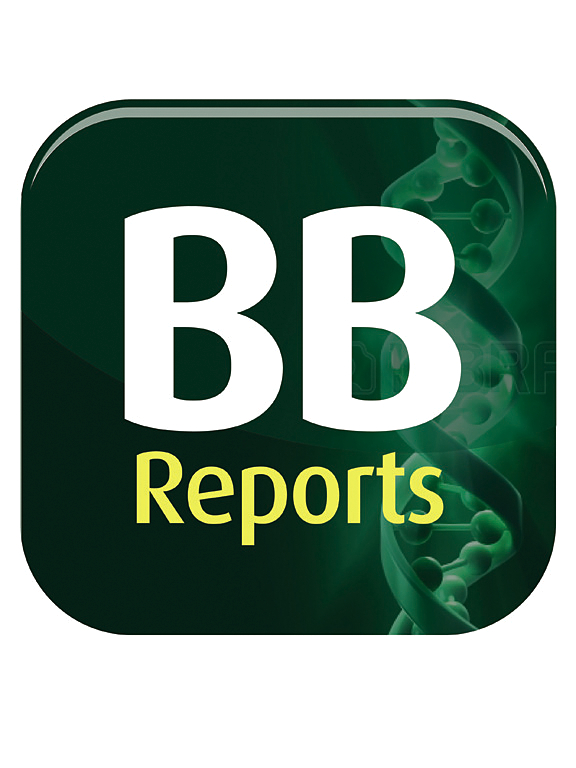pratensis巴氏杆菌抗氧化和细胞毒活性化合物的综合植物化学分析及其GC-MS表征
IF 2.2
Q3 BIOCHEMISTRY & MOLECULAR BIOLOGY
引用次数: 0
摘要
传统上,圣巴顿巴氏杆菌因其药用特性而被使用,特别是其抗菌和抗氧化作用。本研究评价了其植物化学成分、总酚含量(TPC)、总黄酮含量(TFC)、抗氧化活性和抗癌潜力。植物化学筛选采用标准定性方法,TPC和TFC分别采用Folin-Ciocalteu法和氯化铝法进行定量。甲醇(MeOH)、氯仿(CHCl3)和石油醚(PE)提取物的TPC分别为72.9、37.3和16.6 mg QE/g, TFC分别为43.4、28.1和18.3 mg QE/g。抗坏血酸(AA)、MeOH、CHCl3和PE的IC50值分别为7.46、16.13、66.95和112.97 μg/mL。MTT法测定其对MCF-7乳腺癌细胞株的细胞毒性,MeOH的IC50值为293.6 μg/mL, CHCl3为260.0 μg/mL, PE为60.1 μg/mL。形态学分析证实,与未处理的对照组相比,处理过的MCF-7细胞发生了凋亡变化。GC-MS分析鉴定出关键的生物活性化合物,包括叶绿醇、角鲨烯、新叶二烯和β-谷甾醇,这些化合物以抗氧化和抗癌特性而闻名。甲醇提取物具有最高的抗氧化活性,与抗坏血酸相当,而PE提取物具有最强的细胞毒作用。这项研究为普拉氏芽孢杆菌的双重治疗潜力提供了新的见解,强调了它作为抗氧化和抗癌植物化学物质的丰富来源的作用。PE提取物的卓越细胞毒性和甲醇提取物的自由基清除功效突出了其开发基于植物的治疗氧化应激相关疾病和乳腺癌的可行性。进一步分离和鉴定这种植物中最丰富的生物活性化合物,包括角鲨烯、叶绿醇和新叶二烯,可以为药物发现和新治疗剂的开发提供支持。本文章由计算机程序翻译,如有差异,请以英文原文为准。

Comprehensive phytochemical profiling of bioactive compounds from Barleria prattensis for their antioxidant and cytotoxic capacity and its characterization using GC-MS
Barleria prattensis Santapau has been traditionally used for its medicinal properties, particularly for its antimicrobial and antioxidant benefits. This study evaluates its phytochemical composition, total phenolic content (TPC), total flavonoid content (TFC), antioxidant activity, and anticancer potential. Phytochemical screening was conducted using standard qualitative assays, while TPC and TFC were quantified using the Folin–Ciocalteu and aluminum chloride methods, respectively. The TPC values for methanol (MeOH), chloroform (CHCl3), and petroleum ether (PE) extracts were 72.9, 37.3, and 16.6 mg GAE/g, whereas TFC values were 43.4, 28.1, and 18.3 mg QE/g, respectively. Antioxidant activity was assessed using the DPPH radical scavenging assay, with IC50 values of 7.46, 16.13, 66.95, and 112.97 μg/mL for ascorbic acid (AA), MeOH, CHCl3, and PE, respectively. Cytotoxicity against the MCF-7 breast cancer cell line was evaluated using the MTT assay, with IC50 values of 293.6 μg/mL for MeOH, 260.0 μg/mL for CHCl3, and 60.1 μg/mL for PE. Morphological analysis confirmed apoptotic changes in treated MCF-7 cells compared to untreated controls. GC-MS analysis identified key bioactive compounds, including phytol, squalene, neophytadiene and β-sitosterol, which are known for their antioxidant and anticancer properties. The methanolic extract exhibited the highest antioxidant activity, comparable to ascorbic acid, while the PE extract showed the strongest cytotoxic effect. This study provides novel insights into the dual therapeutic potential of B. prattensis, underscoring its role as a rich source of antioxidant and anticancer phytochemicals. The superior cytotoxicity of the PE extract and the methanolic extract's radical scavenging efficacy highlight its viability for developing plant-based therapies for oxidative stress-related disorders and breast cancer. Further isolation and characterization of bioactive compounds, including squalene, phytol, and neophytadiene, which are the most abundant in this plant, could support drug discovery and the development of new therapeutic agents.
求助全文
通过发布文献求助,成功后即可免费获取论文全文。
去求助
来源期刊

Biochemistry and Biophysics Reports
Biochemistry, Genetics and Molecular Biology-Biophysics
CiteScore
4.60
自引率
0.00%
发文量
191
审稿时长
59 days
期刊介绍:
Open access, online only, peer-reviewed international journal in the Life Sciences, established in 2014 Biochemistry and Biophysics Reports (BB Reports) publishes original research in all aspects of Biochemistry, Biophysics and related areas like Molecular and Cell Biology. BB Reports welcomes solid though more preliminary, descriptive and small scale results if they have the potential to stimulate and/or contribute to future research, leading to new insights or hypothesis. Primary criteria for acceptance is that the work is original, scientifically and technically sound and provides valuable knowledge to life sciences research. We strongly believe all results deserve to be published and documented for the advancement of science. BB Reports specifically appreciates receiving reports on: Negative results, Replication studies, Reanalysis of previous datasets.
 求助内容:
求助内容: 应助结果提醒方式:
应助结果提醒方式:


